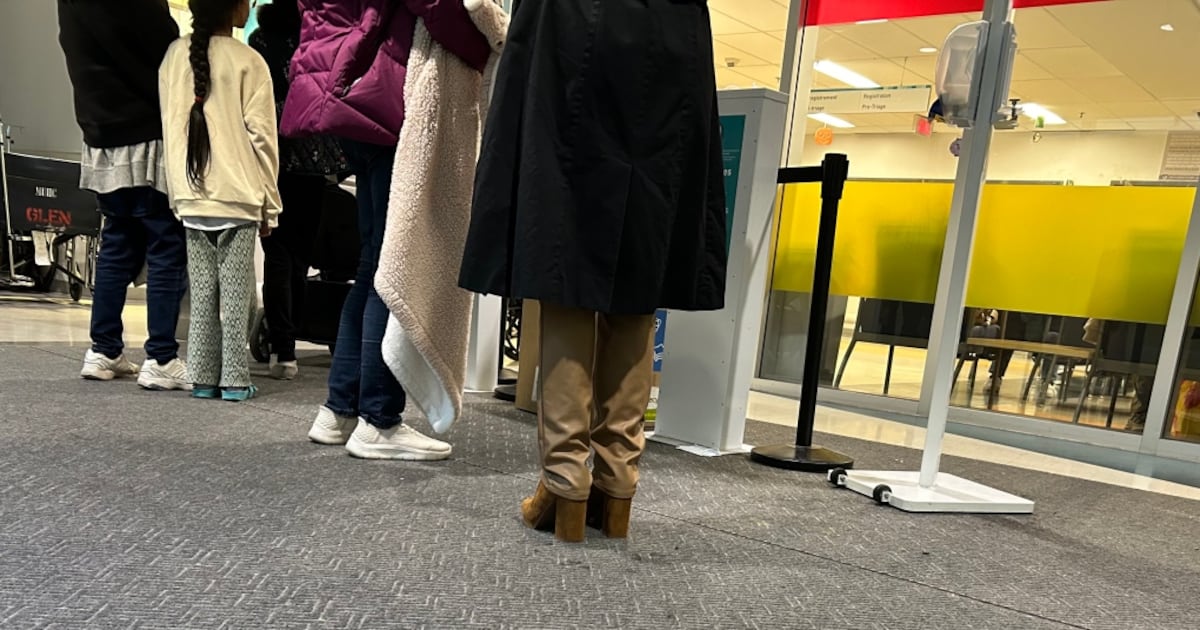Health
Almost 430,000 Quebecers Depart ERs Untreated in 2024 Study

A comprehensive study reveals that nearly 430,000 Quebecers left hospital emergency rooms without receiving treatment in 2024. Conducted by the Montreal Economic Institute (MEI), the report highlights a significant issue in the healthcare system, indicating a growing number of patients are being denied essential care.
In total, Quebec recorded more than 3.7 million emergency room visits last year. Of these, 428,676 individuals, representing 11.6 percent, departed without seeing a doctor. This figure marks an increase of 8.8 percent since 2019. The MEI also noted that across Canada, approximately 1,267,736 patients left emergency rooms untreated out of 16.3 million visits, equating to a national average of 7.8 percent and an overall rise of 35.6 percent.
Emergency Room Access and Care Quality Decline
According to Emmanuelle B. Faubert, an economist with the MEI and author of the report, these patients are not leaving due to improved health. “These patients are not leaving because they feel better, but because the system is failing them,” Faubert stated. The study emphasizes that many of those departing untreated are classified as either P4 or P5, which denotes semi-urgent or non-urgent cases.
“Because they are deemed low priority, these patients are pushed to the back of the line and face some of the longest ER waits,” the report highlights. This situation illustrates a broader problem of access to primary care in Quebec. Furthermore, patients who delay or forgo treatment often face deteriorating health conditions, complicating their situations. “Solving the crisis in primary care is essential if we want to keep patients from continuing to fall through the cracks,” Faubert added.
The MEI’s findings resonate with data from Santé Québec, which indicated that over the past three years, nearly half a million individuals per year left emergency rooms untreated. In the upcoming 2024-2025 period, 70 percent of these departures involved users classified as priority 4 or 5. “These are users whose needs can be met by other health professionals,” Santé Québec explained. Alarmingly, 18 percent of individuals who left without being treated returned to the emergency room within 48 hours.
Efforts to Address Emergency Room Wait Times
The increasing volume of patients in emergency rooms is attributed to Quebec’s aging and growing population. Complex cases requiring greater attention contribute to longer wait times. Currently, Santé Québec is actively working to reduce these wait times, reporting that the average time spent in emergency rooms has decreased by 12 minutes over the past year, from two hours 58 minutes to two hours 46 minutes. This reduction reflects a 6.7 percent improvement for patients classified from P1 to P5.
To further enhance efficiency, Santé Québec is implementing several solutions, including revising criteria for patient referrals post-triage, redefining the role of medical coordinators, and redirecting non-urgent patients to alternative care options.
The MEI has also proposed additional measures to improve access to care. Suggestions include expanding the use of specialized nurse practitioner clinics, broadening the scope of practice for pharmacists, and establishing non-governmental immediate care medical centres for non-life-threatening emergencies, akin to the system used in France.
The MEI’s national data excludes patients from Saskatchewan and those covered by New Brunswick’s Vitalité Santé health network due to a lack of available data from the respective health authorities.
As the healthcare system faces mounting pressures, the need for effective solutions is more urgent than ever, underscoring the importance of addressing both immediate and long-term challenges within emergency care.
-

 Lifestyle3 weeks ago
Lifestyle3 weeks agoWinnipeg Celebrates Culinary Creativity During Le Burger Week 2025
-

 Science1 month ago
Science1 month agoMicrosoft Confirms U.S. Law Overrules Canadian Data Sovereignty
-

 Education4 weeks ago
Education4 weeks agoRed River College Launches New Programs to Address Industry Needs
-

 Health1 month ago
Health1 month agoMontreal’s Groupe Marcelle Leads Canadian Cosmetic Industry Growth
-

 Technology1 month ago
Technology1 month agoDragon Ball: Sparking! Zero Launching on Switch and Switch 2 This November
-

 Science1 month ago
Science1 month agoTech Innovator Amandipp Singh Transforms Hiring for Disabled
-

 Technology1 month ago
Technology1 month agoGoogle Pixel 10 Pro Fold Specs Unveiled Ahead of Launch
-

 Science1 month ago
Science1 month agoChina’s Wukong Spacesuit Sets New Standard for AI in Space
-

 Technology1 month ago
Technology1 month agoWorld of Warcraft Players Buzz Over 19-Quest Bee Challenge
-

 Science1 month ago
Science1 month agoXi Labs Innovates with New AI Operating System Set for 2025 Launch
-

 Business4 weeks ago
Business4 weeks agoDawson City Residents Rally Around Buy Canadian Movement
-

 Business1 month ago
Business1 month agoNew Estimates Reveal ChatGPT-5 Energy Use Could Soar
-

 Technology1 month ago
Technology1 month agoFuture Entertainment Launches DDoD with Gameplay Trailer Showcase
-

 Technology1 month ago
Technology1 month agoGlobal Launch of Ragnarok M: Classic Set for September 3, 2025
-

 Technology1 month ago
Technology1 month agoNew IDR01 Smart Ring Offers Advanced Sports Tracking for $169
-

 Technology1 month ago
Technology1 month agoInnovative 140W GaN Travel Adapter Combines Power and Convenience
-

 Technology1 month ago
Technology1 month agoHumanoid Robots Compete in Hilarious Debut Games in Beijing
-

 Science1 month ago
Science1 month agoNew Precision Approach to Treating Depression Tailors Care to Patients
-

 Health1 month ago
Health1 month agoGiant Boba and Unique Treats Take Center Stage at Ottawa’s Newest Bubble Tea Shop
-

 Technology1 month ago
Technology1 month agoQuoted Tech Launches Back-to-School Discounts on PCs
-

 Technology1 month ago
Technology1 month agoDiscover the Relaxing Charm of Tiny Bookshop: A Cozy Gaming Escape
-

 Technology1 month ago
Technology1 month agoArsanesia Unveils Smith’s Chronicles with Steam Page and Trailer
-

 Education4 weeks ago
Education4 weeks agoAlberta Teachers’ Strike: Potential Impacts on Students and Families
-

 Technology1 month ago
Technology1 month agoRaspberry Pi Unveils $40 Touchscreen for Innovative Projects










